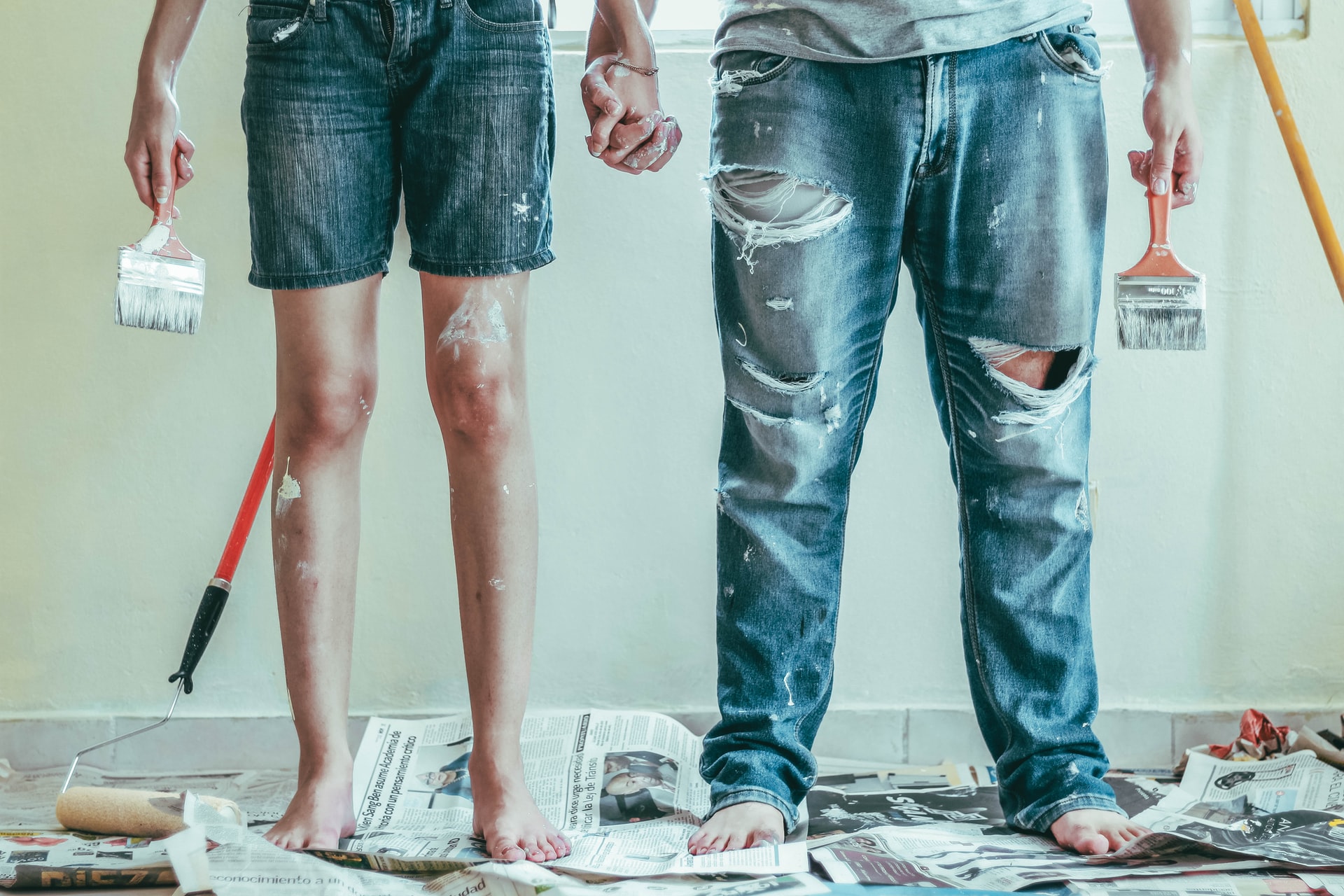Homeownership comes with a sense of pride, and often, a long to-do list. Whether it’s replacing a faucet, updating flooring, or even knocking down a wall, many homeowners are eager to tackle projects themselves to save money. But in the excitement of doing it yourself, there’s a risk most people don’t realize: some DIY jobs can actually void your homeowner’s insurance coverage.
That’s right. If a project isn’t done to code, lacks proper permits, or causes damage later on, your insurer could deny your claim or even cancel your policy entirely. And these aren’t just large-scale renovations. Even seemingly harmless upgrades, like replacing wiring or installing a fence, can backfire if something goes wrong.
Let’s break down eight common DIY tasks that could cost you big time if you’re not careful, and what you can do to avoid a financial disaster.
1. Electrical Work Without a License
Swapping out a light fixture might seem easy, but doing anything beyond the basics—like running new wiring or replacing outlets—without a licensed electrician can be a major red flag for insurers. Electrical fires are one of the leading causes of home damage claims, and if an investigation shows faulty wiring or unpermitted work, your policy might not cover the loss.
Even if you think you’ve done it correctly, insurance companies typically require electrical upgrades to be performed or inspected by a licensed professional. Without that stamp of approval, you could be on the hook for tens of thousands in damages.
2. Roof Repairs or Replacement
Your roof is your home’s first line of defense against the elements, and one of the most scrutinized areas by insurers. DIY roof patching, shingle replacement, or full roof installations without professional oversight can lead to major problems, both structurally and with your policy.
If a future storm causes damage and the insurer discovers that prior repairs were done improperly or without permits, they could deny your claim. Worse, if your faulty work leads to water intrusion or mold, it could void certain coverages altogether.
Insurance companies expect critical structural repairs to be performed by certified contractors. Doing it yourself may save money now, but it could cost you everything later.
3. Plumbing Fixes That Lead to Leaks
A dripping faucet or a clogged toilet may be within your DIY comfort zone, but when it comes to anything involving pipes, water pressure, or replacements, insurers are far more cautious.
Improperly installed plumbing can result in water damage that’s expensive to fix and difficult to insure after the fact. If a pipe bursts due to a poor installation job, insurance adjusters may inspect the source and determine that your work violated policy terms or local building codes.
Even small mistakes like using the wrong fittings or failing to secure connections properly can lead to slow leaks inside walls—a nightmare scenario for both your home and your coverage.
4. Knocking Down Interior Walls
Open floor plans are trendy, but they’re not always DIY-friendly. Removing an interior wall without consulting a structural engineer or obtaining a permit can compromise the integrity of your home. Load-bearing walls, when tampered with, can cause sagging ceilings, floor buckling, and even collapse.
If damage occurs and your insurer finds out the wall was removed without approval, you could be held liable. Many policies also include clauses that exclude damage caused by unauthorized structural changes.
If your renovation plan involves altering your home’s frame, always get professional input—and don’t skip the permits.
5. Installing Fences Without Checking Zoning or Utility Lines
Building a fence seems simple, but it’s riddled with potential insurance pitfalls. For one, if you dig into underground utility lines (like gas, water, or electricity), you could cause extensive damage and be held financially responsible.
Additionally, installing a fence outside your property line or violating local zoning ordinances could result in fines, forced removal, and insurance complications. If your fence causes damage—say, by falling during a storm and hitting a neighbor’s property—your insurer might deny liability if it wasn’t properly installed. Always call 811 to mark utility lines and check local codes before starting a fencing project.

6. Replacing Windows or Doors Incorrectly
Swapping out old windows or doors may not sound dangerous, but it can compromise your home’s insulation, security, and even fire safety rating if done incorrectly.
If poor installation leads to water damage, mold, or a break-in, your insurer might push back on a claim, especially if a professional wasn’t involved. Energy efficiency is another concern. Many modern policies are tied to energy standards, and incorrect installation could affect your home’s rating.
To maintain eligibility for discounts or compliance with building codes, window and door replacements should meet energy and safety requirements, often requiring licensed contractors.
7. Building Decks, Sheds, or Additions Without Permits
Permanent additions to your property, like decks, outdoor sheds, garages, or sunrooms, almost always require permits and inspections. If you build without them, you could be violating your policy.
Insurance companies often require proof that additions meet local building codes. If a storm damages your unpermitted deck or someone is injured on a poorly built structure, your claim may be denied, and you could face personal liability. Moreover, unpermitted structures could affect your home’s resale value or lead to penalties when you try to sell.
8. Installing a Wood Stove or Fireplace
Adding a cozy wood stove or fireplace may seem like a great DIY upgrade, especially in colder climates. But it’s one of the riskiest projects you can take on without professional help.
Improper venting, clearance errors, or incorrect installation could lead to house fires or carbon monoxide buildup. Insurance companies know this, and they often require inspection by a certified installer to keep coverage valid.
In fact, some policies explicitly state that wood-burning appliances must meet manufacturer and building code specifications, or coverage will be void in the event of a fire.
How to Protect Your Policy While Tackling Home Improvements
There’s nothing wrong with wanting to improve your home, and you don’t need to call a contractor for every small task. But when a DIY project starts to affect your home’s structure, safety systems, or compliance with local codes, your insurance company takes notice.
To keep your policy safe and your investment protected:
- Check your policy before starting any big project. Know what’s covered and what’s not when it comes to DIY work.
- Get permits when required. Even if the project seems minor, permits protect both you and your insurance coverage.
- Hire licensed professionals for plumbing, electrical, and structural changes. It’s worth the cost for your peace of mind.
- Document everything. Take photos, keep receipts, and maintain a record of who did the work and when.
It’s tempting to go the DIY route to save money, but it’s not worth the risk of voiding your entire insurance policy over one misstep.
Don’t Let a DIY Project Sabotage Your Homeowner’s Coverage
Every homeowner wants to feel empowered and capable of improving their space. But there’s a line between smart savings and risky shortcuts, and insurance companies know where that line is drawn. If a well-meaning repair turns into a costly claim denial, the real cost of DIY could far outweigh the price of hiring a pro.
Have you ever done a home project that came with more risk than expected? What’s one DIY job you’d never try again?
Read More:
These 7 DIY Projects Could End With a Lawsuit
6 DIY Mistakes That Lead to Utility Disconnection Notices
Riley Jones is an Arizona native with over nine years of writing experience. From personal finance to travel to digital marketing to pop culture, she’s written about everything under the sun. When she’s not writing, she’s spending her time outside, reading, or cuddling with her two corgis.
Read the full article here
















